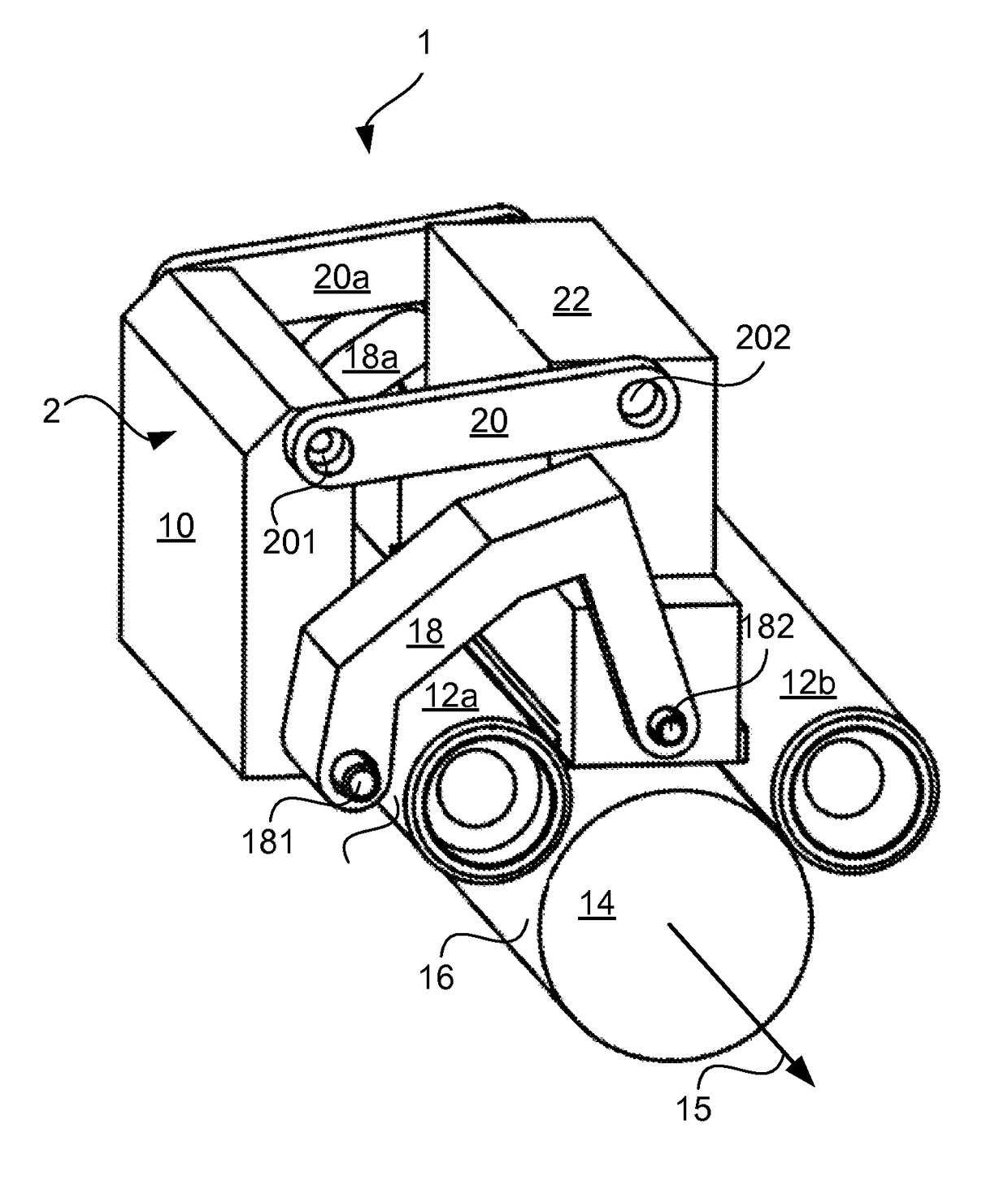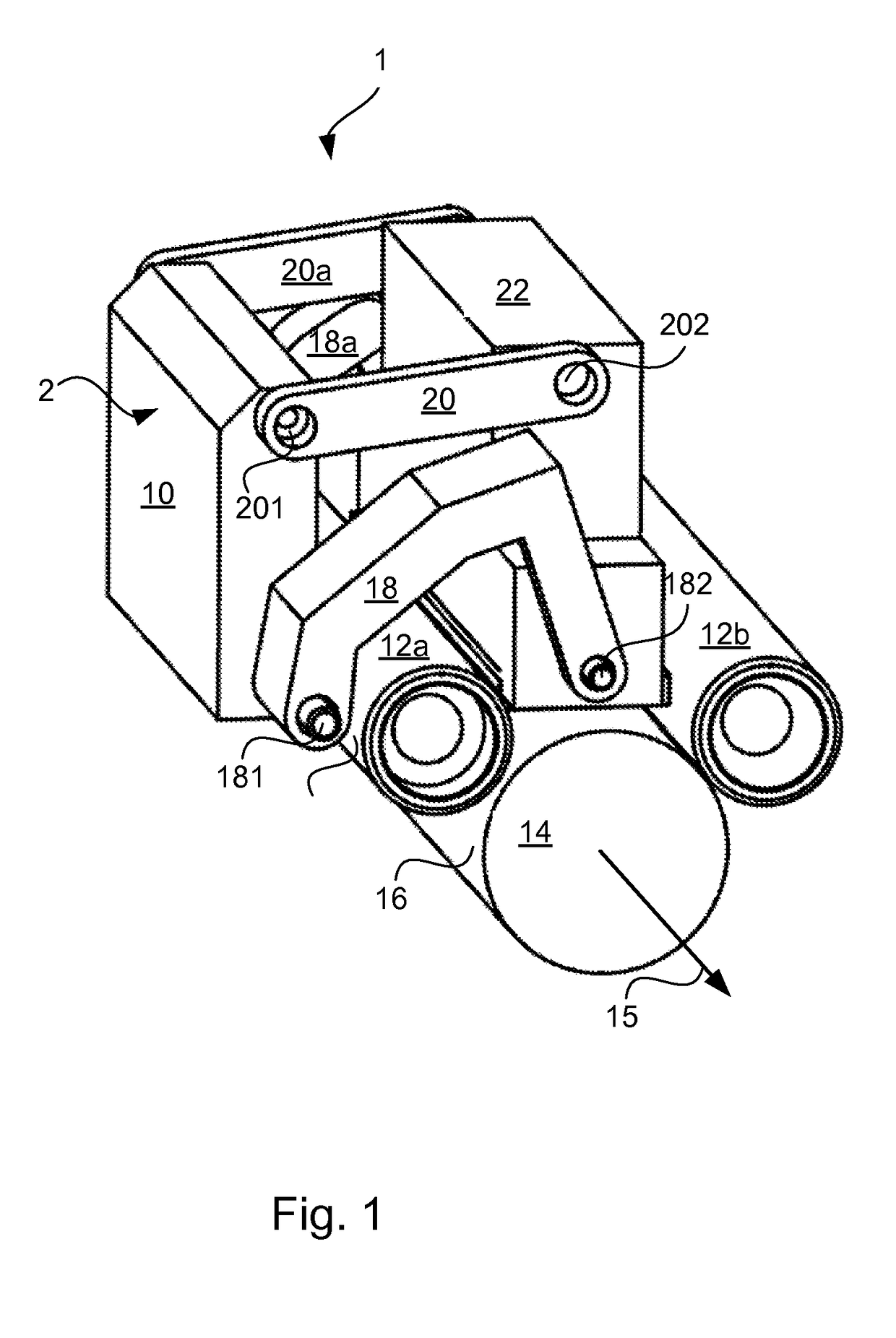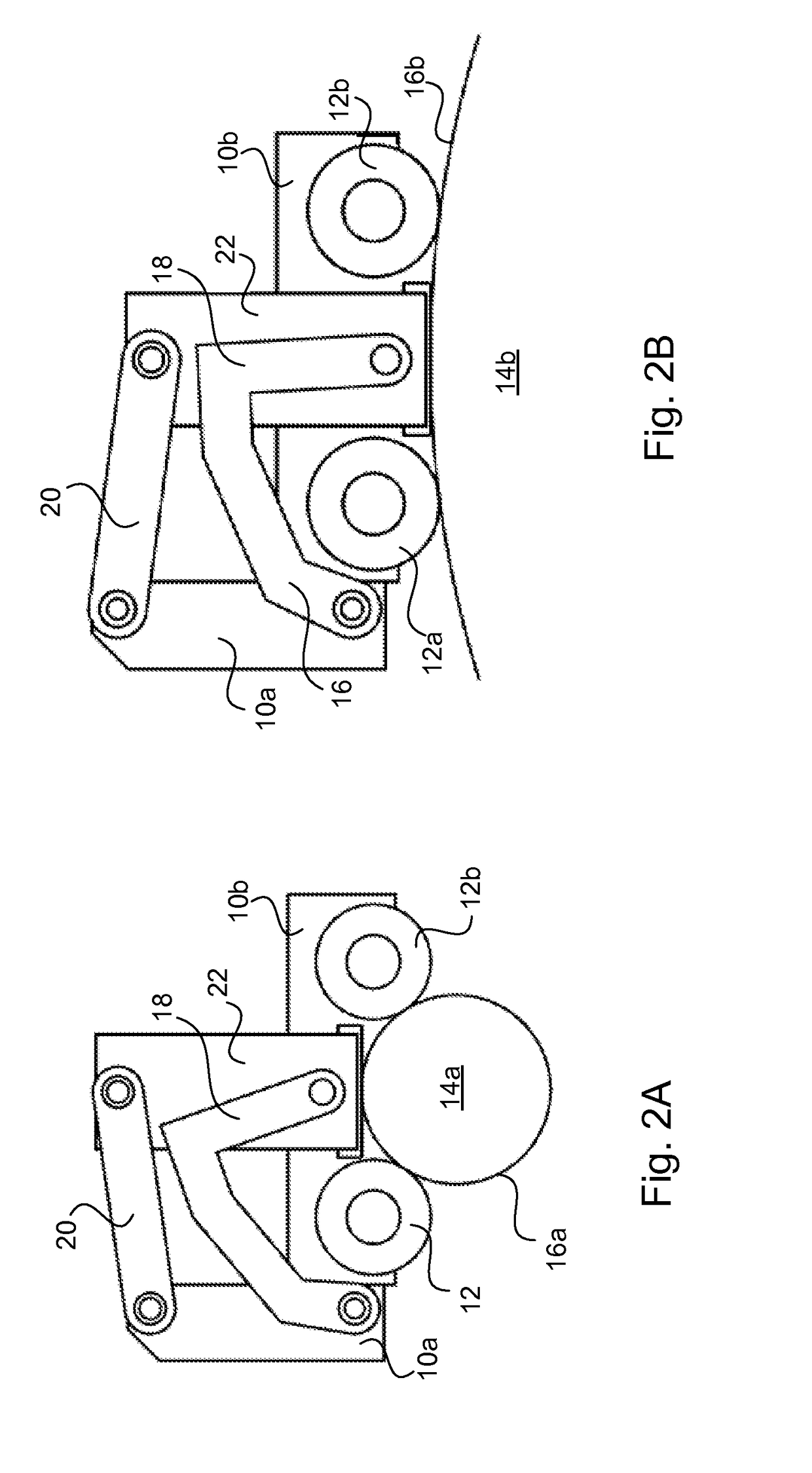Probe holder providing constant lift-off for in-line bar-pipe testing
a technology of in-line bar-pipe testing and probe holder, which is applied in the direction of analysing solids using sonic/ultrasonic/infrasonic waves, measuring devices, instruments, etc., can solve the problems of rapid and continuous relative movement between the probes, exacerbated problems, and maintain constant lift-off, so as to reduce the pressure between the spacer and the inspected surface, avoid excessive wear of the spacer, and increase the surface area of the spacer
- Summary
- Abstract
- Description
- Claims
- Application Information
AI Technical Summary
Benefits of technology
Problems solved by technology
Method used
Image
Examples
Embodiment Construction
[0023]FIG. 1 shows a probe assembly 1 according to the present disclosure. Probe assembly 1 includes a probe 22 and a probe holder assembly 2. Probe holder assembly 2 comprises a frame 10, rollers 12a and 12b, and mechanical links 18, 18a, 20 and 20a. Mechanical links 18 and 18a are attached at one end to the frame 10 by means of freely rotatable pivot joints 181 and 181a (not shown), and at the other end to probe 22 by means of freely rotatable pivot joints 182 and 182a (not shown). Mechanical links 20 and 20a are attached at one end to the frame 10 by means of freely rotatable pivot joints 201 and 201a (not shown), and at the other end to the probe 22 by means of freely rotatable pivot joints 202 and 202a (not shown). Rollers 12a and 12b are generally cylindrical, and are attached to frame 10 such that they are free to rotate about their respective axes, but the axes are in fixed geometrical relation to frame 10. The outer surfaces of rollers 12a and 12b are in contact with outer ...
PUM
| Property | Measurement | Unit |
|---|---|---|
| area | aaaaa | aaaaa |
| weight | aaaaa | aaaaa |
| lift-off distance | aaaaa | aaaaa |
Abstract
Description
Claims
Application Information
 Login to View More
Login to View More - R&D
- Intellectual Property
- Life Sciences
- Materials
- Tech Scout
- Unparalleled Data Quality
- Higher Quality Content
- 60% Fewer Hallucinations
Browse by: Latest US Patents, China's latest patents, Technical Efficacy Thesaurus, Application Domain, Technology Topic, Popular Technical Reports.
© 2025 PatSnap. All rights reserved.Legal|Privacy policy|Modern Slavery Act Transparency Statement|Sitemap|About US| Contact US: help@patsnap.com



